Asteroids
Contents
Asteroids Classification
An asteroid is basically a hunk rock that does not qualify as a planet, dwarf planet, satellite, or moon. Asteroids can range in size from very small (less than a mile) to very large (size of a dwarf planet). There are three main classifications of asteroids:
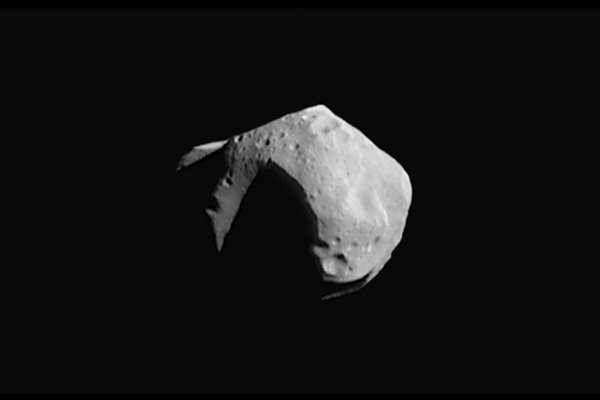 C-type asteroid (253 Mathilde) / nasa.gov
C-type asteroid (253 Mathilde) / nasa.govChondrite (C-group) — made of a clay and silicate rocks and is usually dark in appearance. This is the most common class of asteroid found. This group divides into 4 subgroups::
- C-type — Carbon based with a low albedo (light reflection).
- B-type — Carbon based with a higher albedo then the common C-types.
- F-type — Similar to B-type but lack in "water" absorption.
- G-type — Similar to C-type but with a strong ultraviolet absorption.
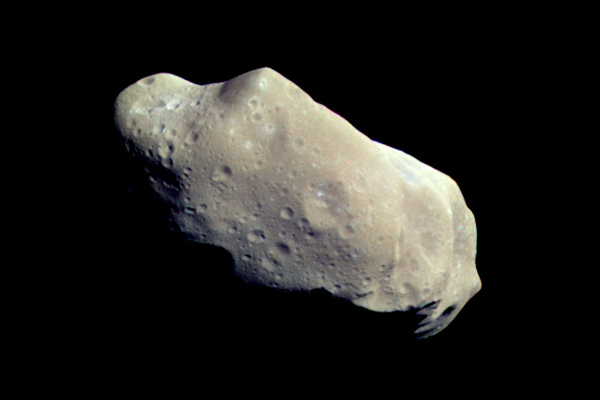 S-type asteroid (243 Ida) / nasa.gov
S-type asteroid (243 Ida) / nasa.govStony (S-type) which is primarily a silicate and nickle-iron based asteroid.
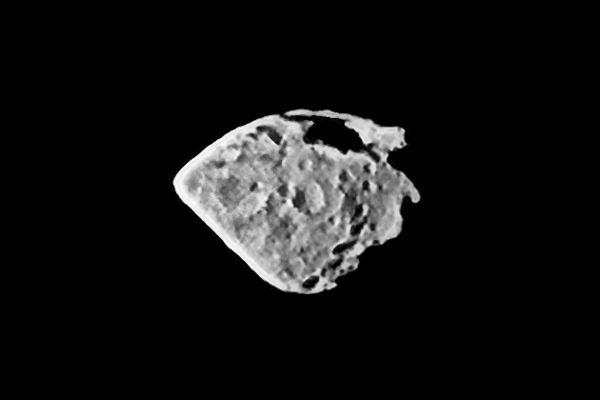 E-type asteroid (2867 Steins) / flickr.com
E-type asteroid (2867 Steins) / flickr.comX-group — with x-group, asteroids are not identified by the main group designation but by one of the following sub-types instead.
- M-type — Metallic in nature, they are primarily nickle-iron based.
- E-type — Enstatite Achondrite surfaced and has a high albedo.
- P-type — Similar to M-type but with a much lower albedo.
These classifications help in identifying the material in which the asteroids contain as well as in placing them in family groups. Some asteroids may have been parts of either larger asteroids that have broken up or burnt out comets, there have many asteroids that still emit a gaseous cloud similar to a comets.
Asteroids contain many valuable resources such as fossil fuels that could be beneficial to Earth. Precious metals are the focus on future mining operations being planned for these objects, but other elements are also being sought out that could be of use. Scientists believe they may hold keys to help us to better understand our solar system and even the beginnings of life on our world.
Asteroid belt
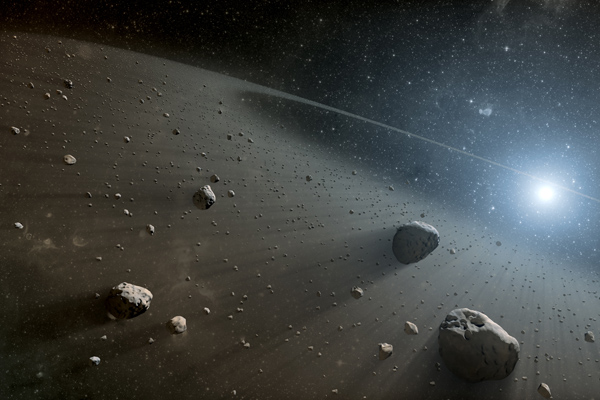 Artist's concept of Asteroid belt / nasa.gov
Artist's concept of Asteroid belt / nasa.govA large collection of asteroids that remain grouped together is typically called an Asteroid belt These asteroids are typically of the same class, but not exclusively. The only known asteroid belt in our solar system is between Mars and Jupiter, where the dwarf planet Ceres is. Whenever Jupiter and Mars come in close to one another, their joint gravitational fields sometimes "knock" some of the asteroids out of the belt. These loose rocks then either get caught in a planetary pull and orbit the planet as a small moon or they fall into the planets and no longer exist.
Currently there is only one known asteroid belt in our solar system. It is located between Mars and Jupiter and contains the dwarf planet Ceres. There is no official name for the asteroid belt but some have come to call it the Ceres belt after the dwarf planet. Asteroids within this belt range from 587 miles wide to 1 to 2 miles wide. When Jupiter and Mars' orbits bring them in close range of one another, their combined gravitational pull sometimes pulls these asteroids out of the belt. They either crash into another planet or become captured and become moons.
There are several projects that have been put into place involving this asteroid belt. Missions to colonize Mars (the closest planet to the belt) for easier access to the belt for mining purposes has been in the works for several years. Space-X, ESA (European Space Agency), Mars One, and NASA are just a few agencies that have worked out ideas and projects to colonize Mars for this purpose. It's been proposed that colonization of Mars will be in place and mining operations could begin as soon as 2021.
The asteroids in the belt contain a large supply of fossil fuels which could prove beneficial to Earth but scientist are more interested in the abundant amount of information that could be obtained from these asteroids. They could offer a better understanding to how planets and our solar system formed billions of years ago.
Kuiper Belt
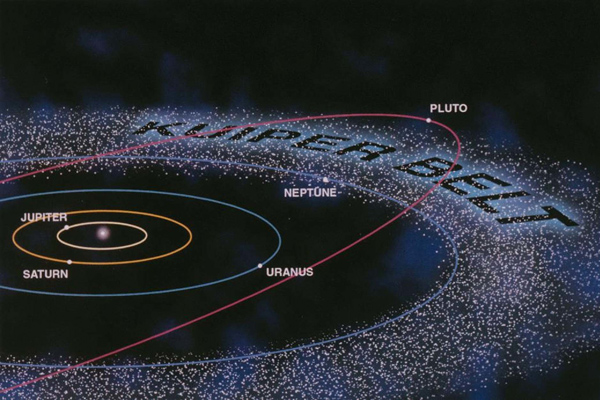 Kuiper Belt location / nasa.gov
Kuiper Belt location / nasa.govThe Kuiper Belt is a part of our solar system beyond Neptune where it is believed that many of our short period comets (comets with an orbit less than 200 years) come from. The Kuiper Belt is similar to our asteroid belt only much larger and is home of 4 identified dwarf planets Pluto, Haumea, Eris, and Makemake. There is also a list of objects that are being considered as dwarf planets but have not been fully designated as such.
Many of the objects found in the Kuiper Belt are believed remnants of our solar system during its formation. Most of these objects contain frozen elements such as methane, ammonia, and water and it is also strongly believed that the theorized Planet X or Planet Nine is in this region. But because of its distance from Earth, true analysis of this area is very difficult making it impossible to fully study this region.
Near-Earth asteroids
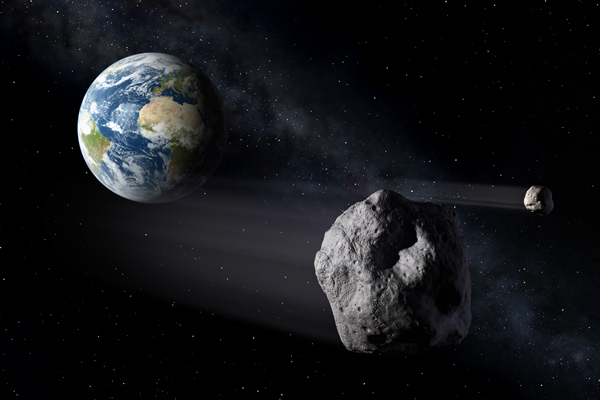 Artist's impression of a Near-Earth Asteroid passing by Earth / esa.int
Artist's impression of a Near-Earth Asteroid passing by Earth / esa.intA Near-Earth asteroid is exactly as its name implies. When an asteroid travels close to Earth's orbit, some could even pose a threat to the life on Earth, it's considered a NEO or NEA. These objects are carefully monitored and projects are into place to destroy or divert any potentially threatening objects that may enter Earth's atmosphere in the future and cause a lot of damage. Impacts zones such as the ones in Winslow, Arizona and Vredefort Crater, South Africa show us just how devastating this impacts are.
Projects to destroy these objects if their trajectory's (direction of travel) shows that they will impact with Earth. The closest object to come near earth thus far was a comet (Lexell) at 1.4 million miles. Impact from any object (depending on size) could prove deadly for Earth and its inhabitants so observations of these objects are crucial. By observing these objects, it gives us warning before an impact can occur allowing us enough time to find a way to destroy or divert these objects. This could save countless lives on our planet and prevent destruction of natural habitats.
On NASA's (National Aeronautics and Space Administration) website, they have a page dedicated to listing any near-earth objects and information about those objects for anyone to see. They last near-earth object was in March of 2016, Comet P/2016 BA14 came with 2.2 million miles of Earth. While these distances may seem far away, it does not take much to divert these NEO's toward Earths atmosphere. A sudden collision with another object or a sling shot (object caught by another larger object's gravitation pull which slings it around and releases it) could send these objects towards Earth. The larger the object the more of a threat it is to Earth and some objects are the size of the state of Texas.
Of all near-earth objects, meteors are our biggest threat as they impact Earth. One such object which hurtled into Earth's atmosphere occurred in 2013 and was about 59 feet (18 meters) in size and exploded over Russia creating a shock-wave that shattered windows in Chelyabinsk. Another famous meteor strike may have been responsible for extinction of the dinosaurs which occurred about 60 million years ago.
Largest asteroids
This is a list of the "big five" largest asteroids in our solar system. All of these asteroids are in the (unofficially named) "Ceres" belt, an asteroid belt located between Mars and Jupiter. There are actually 1000's of asteroids within our solar system, some of which are classified as moons. Most of which are around Jupiter and Mars due to their near to the asteroid belt.
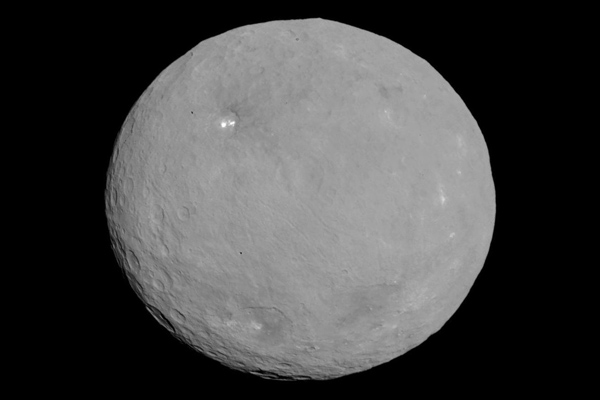 Ceres / nasa.gov
Ceres / nasa.govCeres — although Ceres is now listed as a dwarf planet, but it is still considered the largest asteroid in our solar system. It orbits the sun with in the asteroid belt (occasionally called the Ceres asteroid belt) between Mars and Jupiter. It is about 587 miles (945 km) in size making it the largest asteroid.
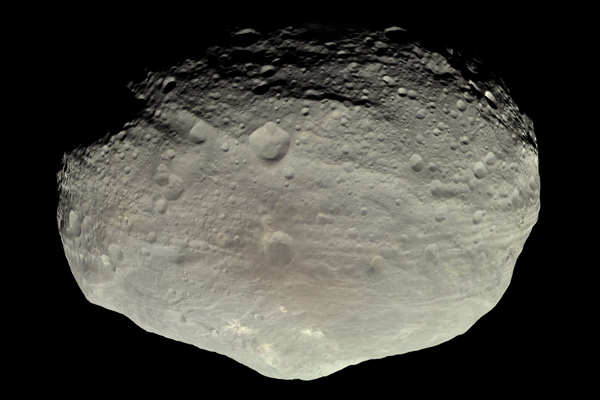 Color image of Vesta taken by Dawn / unmannedspaceflight.com
Color image of Vesta taken by Dawn / unmannedspaceflight.comVesta — is the second largest asteroid in the solar system at 326 miles (525 km) in size and is also in the asteroid belt between Mars and Jupiter. It contributes about 9% of the total mass of the entire belt. It has an orbital time of 3.63 years and it has an axial tilt of 29 degrees. This asteroid is on a list of objects that are under consideration as a dwarf planet.
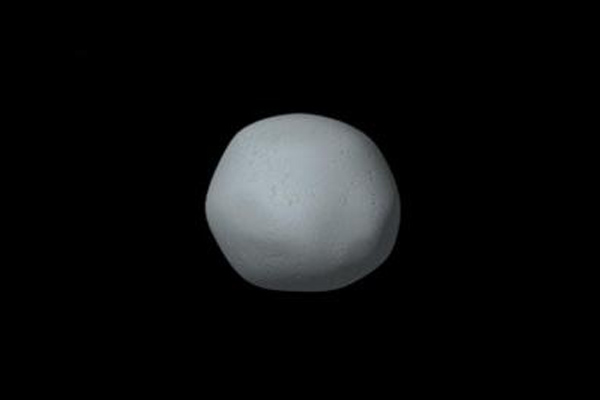 Model of the asteroid Pallas / nasa.gov
Model of the asteroid Pallas / nasa.govPallas — covers about 7% of the total mass of the asteroid belt and is the third largest asteroid in the solar system at 318 miles (512 km) in size. It's been placed on a list of discovered objects for consideration as a dwarf planet (along with Sedna, Orcus, Quaoar, 2002 TX 300, 2002 AW 197, Varuna, Ixion, Vesta, and Hygiea) but at this time it is still considered an asteroid.
Hygiea — is the fourth largest asteroid in our solar system at about 217 to 300 miles (350 to 500 km) in size. It is also under consideration as a dwarf planet versus an asteroid due to its mass and shape. It is a C-type asteroid because it consist primarily of a carbon type surface.
Euphrosyne — of the over 30 asteroids that has been discovered from the belt, Euphrosyne is by far the darkest. It is a C-type asteroid and orbits at the very edge of the belt and has a high mass so it is solid and not porous. Euphrosyne has been mostly studied via radar so many of the information is estimated.
Video Gallery

-
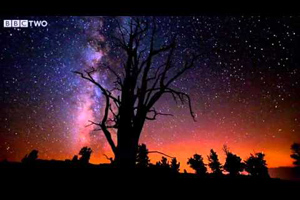 What Are Asteroids Made From
What Are Asteroids Made From
-
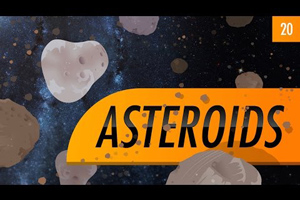 Asteroids: Crash Course Astronomy
Asteroids: Crash Course Astronomy
-
 Top 10 Most Interesting Asteroids
Top 10 Most Interesting Asteroids
-
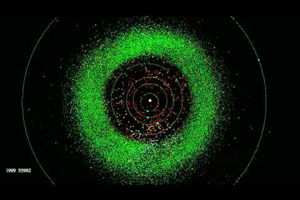 Asteroid Discovery From 1980-2010
Asteroid Discovery From 1980-2010